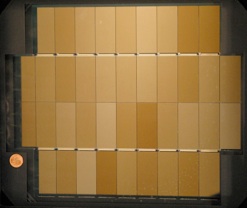The NGVS: THE DATA

Data Acquisition
The NGVS is starting its fourth year of operation. The figure below shows (as filled squares) the fields observed during the first three years (i.e. up to July 2011): the top panel shows fields for which long-exposures were obtained, while the bottom panel shows fields for which short exposures were obtained. The survey area of the full NGVS is outlined in orange.

Data Acquisition AND PROCESSING
The NGVS will use approximatively 150 nights of CFHT time between December and June for four consecutive years, starting in 2009. Within a few days of the end of each 15-day MegaPrime run, validation and pre-processed images will be produced by the Elixir and Elixir-LSB pipeline at CFHT and archived at the Canadian Astronomy Data Center (CADC). Global astrometric solutions, image stacking and preliminary source catalogues will be generated by MegaPipe (a project funded and maintained by CADC with the support of the Canadian Space Agency) and, independently, by Terapix (a data reduction centre located at the Institut d'Astrophysique in Paris, France).

The CFHT/MegaCam CCD mosaic.
The main challenge in processing NGVS data is the characterization of the scattered light component affecting each MegaCam image: traditional data reduction techniques (such as used for the CFHT Legacy Survey) are ineffective in removing such scattered light component without compromising the extended sources present in the field. The NGVS collaboration will produce three different stacks:
-
•Elixir-processed stacks using a “local” background determination. These stacks ae produced using the same technique adopted for processing CFHT-LS data. They are useful to study high-redshift or compact objects, but they are not suited for the study of extended galaxies in Virgo, or extended low-surface brightness features such as tidal debries or intracluster light.
-
-
•Elixir-processed stacks using a “global” background determination. These stacks use a characterization of the background obtained using archival images. Because the scattered light component varies at the level of several percent on timescales of order ~1 hour, these stacks are not suited for the study of the large-scale structure of Virgo galaxies, the intracluster light, large-scale tidal features or, in general, features with surface brightness more than a few magnitudes fainter than the sky. They are, however, suited for the study of bright galaxy cores and compact objects. More information about the MegaPipe version of the pipeline for global background subtraction can be found here.
-
-
•Elixir-LSB processed stacks. Elixir-LSB is a pipeline developed by J.C. Cuillandre to provide a real-time characterization of the scattered light component in MegaCam images. In order to be processed by Elixir-LSB, data must be acquired using a specific acquisition pattern, as was adopted for the NGVS (for instance, Elixir-LSB could not be used to characterize the background in CFHT-LS images). More information about Elixir-LSB will be available soon.
Data ARCHIVING
All NGVS data will be archived by the CADC. Elixir processed data and stacks areavailable to the French and Canadian community as soon as they are produced, and to the international community one year later.